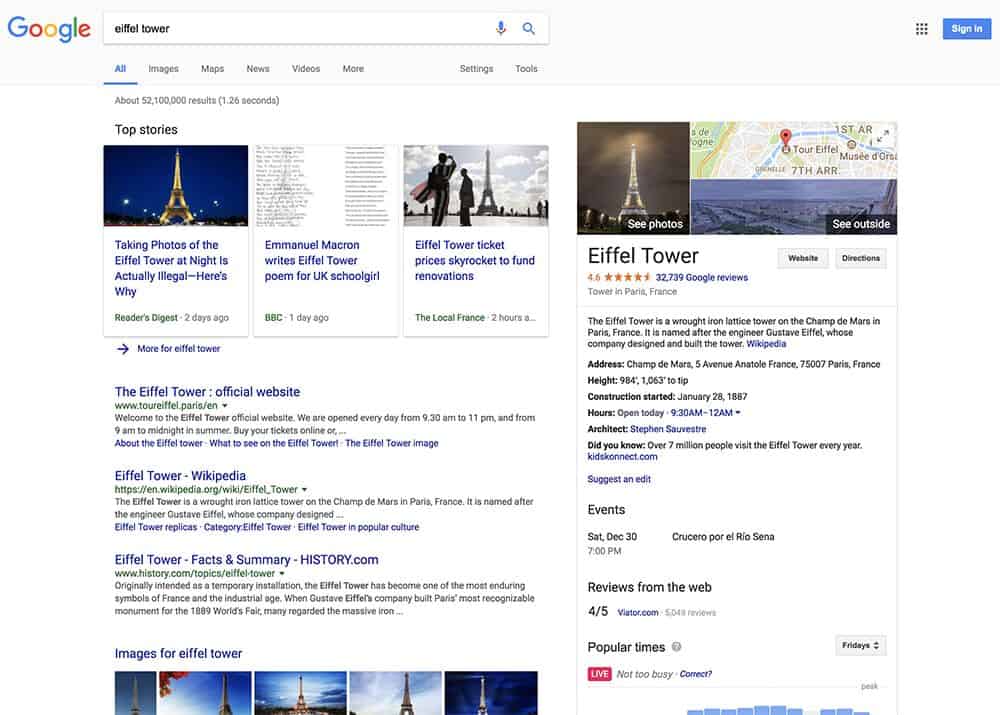SEO Basics: A Beginner’s Guide to RankBrain and SEO Strategies
SEO, or search engine optimization, is nothing new to the online world. For years now, ranking in search results organically has been something websites (businesses, blogs, stores, and more) have worked hard to do.
For online users, search engines are often the starting point for whatever it is they are looking for. Whether it’s a service, product, or general information, taking the steps to rank organically is always important.
Here are some basics about search engine optimization to help you understand search engines like Google, as well as your readers, a little better. If you’re looking for tips on how to improve your SEO strategy, apply our suggestions below.
What is RankBrain?
Before we get into the details of SEO strategy, we have to talk about RankBrain. Google confirmed the existence of RankBrain on October 26, 2015.
Moz defines RankBrain as “a component of Google’s core algorithm which uses machine learning (the ability of machines to teach themselves from data inputs) to determine the most relevant results to search engine queries.”
In other words… it helps Google better interpret a user’s intent (what a user is looking for when they search) by taking into account user behavior, previous search histories, etc.
Before RankBrain, search engines required keywords and exact phrases to provide users with the information they were looking for. Now with RankBrain, Google interprets the meaning behind a users search, versus just reading words at face value, and in doing so can provide a better set of results for any given search.
The best way to understand how RankBrain works is through examples. Below are screenshots of two searches with the same intended result.
The first search is for “Eiffel Tower.” As you might expect, when you type this into Google, you’ll get results for the Eiffel Tower. Note that the official website for the Eiffel Tower is the first search result in the links on the left and the Eiffel Tower’s Google Knowledge Graph shows up on the right side.
Now let’s look at the first page of results after searching for “Tower in Paris.” While not receiving the word “Eiffel,” Google interprets the user’s intent as likely looking for information on the Eiffel Tower, and it’s right. We can also see results scattered throughout the page for the Montparnasse Tower (a 210-meter panoramic observation deck/office skyscraper in the Montparnasse area of Paris). Google is using data from users’ behaviors, patterns, and habits in the past to provide us with the most likely and relevant results for this search.
Looking at the search results, you can see all of the places the words “tower” and “Paris” are found in the search results.
How Does Knowing This Help Your SEO Strategy?
The early days of SEO were all about keyword matching. Not only did users have to get extremely specific in their searches, if someone wanted to rank for a particular keyword or phrase, they had to make sure it was on their website and matched what the user was searching for as well.
Now with the emergence of RankBrain – and even with the evolution of SEO in the last few years – there are a number of practices you can adopt to make sure you have an SEO strategy for the online world today.
Strategy #1: Creating Balanced Content
There’s a technique often accredited to the field of journalism known as “show, don’t tell.” Essentially, don’t take a reader through your own version of an experience, take them through the experience as it happened, using action, words, senses, feelings, and thoughts.
As content creators, we must learn to show and tell. Search engines today are smarter than they’ve ever been before and users are becoming more comfortable interacting with them in more “human” ways. In that way, we’re no longer restricted to using only exact keywords to ensure relevant content comes up in search results, though keywords are still important. However, keyword stuffing and a lack of quality content can actually harm your site’s ranking in the long run.
Strategy #2: Stronger Technical Details
Beyond your content, there are a number of technical things you can do to improve how your site is viewed by Google and other search engines. Here’s one example:
Strong Titles and Meta Descriptions
The titles you choose for your content and the meta descriptions you write up for search engine optimization are still extremely important.
Let’s look at some results from the “Tower in Paris” search again.
We can see that the first result includes the words “Tower” and “Paris” in the title as well as highlighted in the description, technically a match for the search query. While the official Eiffel Tower website shows up just below, Google has determined that the Montparnasse Tower is more relevant for this search based on user behavior for this search and searches like it.
Note also that the official Eiffel Tower website also shows a section of content from the site that includes all of the words used in the search query. Because the search was so broad, the content pulled in the description is sharing information on the Eiffel Tower itself to help us see how the result is relevant.
Below are a couple of results from the “Eiffel Tower” search.
The official website is the first result on the page. Note here that the title is the same, but the description here is different than the one above. Here, Google can see the user knows exactly what they’re looking for and therefore shares more detailed information, like a snippet of the site that mentions the seasons and hours of operation and how to buy tickets.
These two images are good examples of how important it is to write for search engines as well as your readers. The gap between the two is shrinking, technically speaking, so make sure you’re covering your bases. Other technical pieces you should be covering are making sure you have a relevant URL, image alt tags on all the images on your website, and you’re implementing schema markup on your website.
Strategy #3: Creating Quality Results
With Google’s more complex abilities, it can now apply user data to its ever-growing understanding of how users interact with search results. This is also known as machine learning and is a big part of how RankBrain works.
For example, let’s say a user searches for “organic cookies” and they find a result three spots down that they like and click on. Once a user clicks on the site, Google observes the user’s Dwell Time.
Dwell Time is the amount of time a user spends on a page.
If the user visits the site and exits right away it’s known as “bouncing,” Google could interpret a high bounce rate (ultimately based on a number of factors) as the content on a website not being as helpful in answering the original search query “organic cookies,” as its ranking reflects.
If the user exits right away and then clicks on a different result on the page five spots down and stays there a while, Google will interpret this site as being more helpful for the search query. If this fifth result continues to attract clicks like this, over time it will likely gain credibility and a higher ranking due to its high click-through rate (the number of clicks a link receives divided by the number of times it’s viewed) and high session duration (the amount of time a user spends on a website).
When it comes to quality results, not only do you need relevant information to show up in search results like we saw in strategy #2, you also need to make sure the content on your website really serves your visitors so they’ll use you to answer their initial question and hopefully return to you for more information.
In the end, remember…
Since Google can interpret user data and patterns, what users do – every click, the words they use when searching, how long they spend on a site and whether or not they bounce back to the search results – all make a difference. Remember, you’re optimizing for both Google and your readers.
Wow, that was a lot!
We know this was an extra long post, so thanks for sticking with us! After all that information, we’d love to lend you a hand if you have any other questions or need an experienced team to support you and your business in this ever-changing online world.




